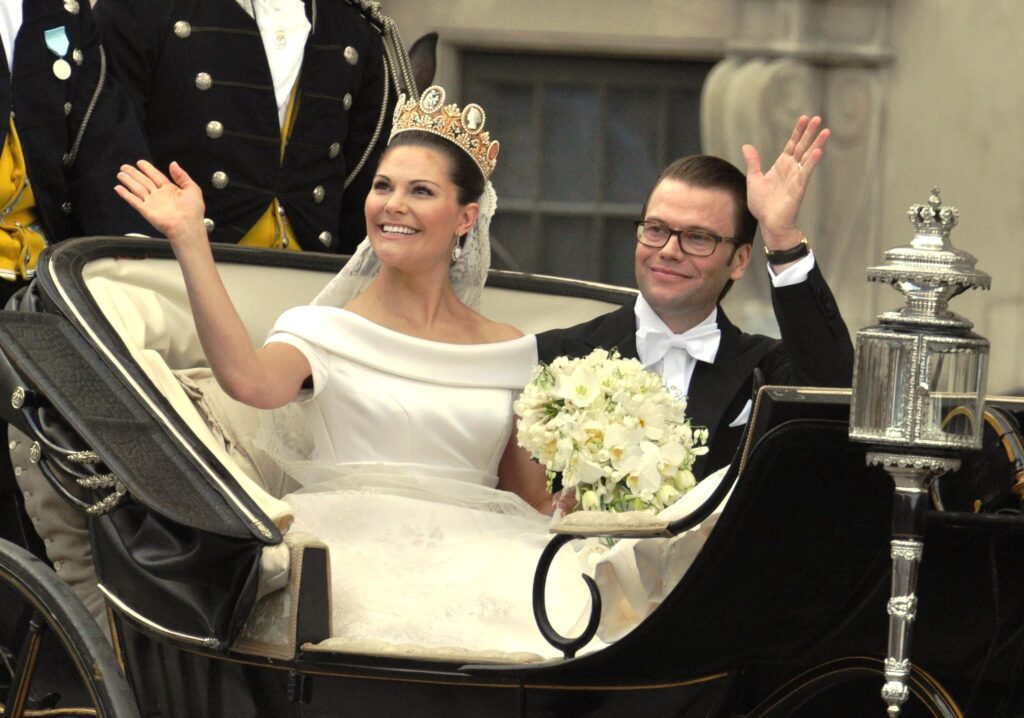
When it comes to the intricate art of wealth building, few individuals navigate the financial landscape with the acumen and foresight of billionaires. Their extraordinary success isn’t merely a stroke of luck or impeccable timing; it’s the culmination of smart, diversified, and profoundly long-term investment strategies. By meticulously observing how these financial titans allocate capital, manage risk, and explore uncharted market territories, we can unearth invaluable insights applicable to our own financial journeys, aspiring to build not just personal wealth, but generational legacies.
Billionaires, unlike many conventional investors, approach their portfolios with a distinctive philosophy: they invest to grow and protect wealth over generations, not just to earn short-term returns. This ‘legacy thinking’ shapes every decision, manifesting in deeply diversified portfolios that span multiple sectors, assets, and geographies. Crucially, they understand that the preservation of capital is as vital as its growth, underscoring a disciplined approach to risk management that sets them apart.
We embark on a journey to dissect the core tenets of their investment prowess, translating their complex methodologies into actionable intelligence. This exploration focuses on the practical approaches used by the world’s wealthiest, moving beyond the headlines to reveal the strategic depth behind their financial empires. From the bedrock of diversification to the cutting edge of disruptive technologies, these are the proven strategies that can reshape your understanding of financial success.
1. **Comprehensive Asset Diversification**
One of the most defining characteristics of billionaire wealth allocation is an unwavering commitment to diversification. Visionaries like Warren Buffett, Ray Dalio, and Jeff Bezos famously “don’t keep all their money in one place.” This fundamental principle dictates spreading investments across a wide array of asset classes, serving as the primary bulwark against market volatility while simultaneously maximizing potential returns over time.
Their portfolios are meticulously constructed to include a vast spectrum of assets. This typically encompasses equities, both public and private, offering a mix of growth and dividend-paying assets. Real estate, ranging from residential and commercial properties to industrial holdings, forms another critical component, generating passive income and appreciating over time. Beyond these traditional avenues, billionaires also venture into commodities like gold and silver, recognizing their role as hedges against economic uncertainty.
Furthermore, the ultra-rich extensively utilize alternative investments such as hedge funds, private equity, and venture capital, which provide access to high-risk, high-reward opportunities often inaccessible to the general public. Increasingly, though cautiously, cryptocurrency is also finding its place in these sophisticated portfolios. This multi-faceted approach ensures that wealth grows steadily, even in the face of uncertain market conditions, by mitigating the impact of any single asset’s underperformance.
Beyond just asset classes, diversification for billionaires extends geographically and across sectors. Investing in assets across different regions and countries protects against geopolitical risks and allows them to capitalize on emerging market opportunities. Similarly, spreading investments across various sectors reduces exposure to industry-specific risks, ensuring that “a downturn in one sector may be offset by gains in another,” thereby strengthening overall portfolio resilience.
Read more about: A Financial Advisor’s Blueprint: 15 Essential Investment Strategies for a Secure Retirement in 2025

2. **Strategic Business Ownership and Equity Focus**
A foundational principle distinguishing billionaire investment strategies is their profound preference for “ownership over income.” Rather than seeking fixed earnings or salaries, the wealthiest individuals prioritize gaining significant ownership stakes in businesses. This often means investing in startups, real estate ventures, and established companies where they can acquire equity, thereby participating directly in the appreciation of the asset.
Examples abound in the annals of modern wealth creation, where figures like Elon Musk and Jeff Bezos “earned most of their wealth through stock appreciation in their own companies, not salaries.” This highlights the critical importance of entrepreneurial ventures and a long-term commitment to business growth. Many billionaires accumulate their fortunes by “owning and growing businesses,” whether through founding revolutionary companies or through strategic investments in private enterprises.
This focus on business ownership is intrinsically linked to “investing in what they understand.” Billionaires conduct deep research and due diligence, aligning their capital with industries and business models they comprehend intimately. This meticulous approach helps them avoid emotional decisions and significantly reduces risk exposure, allowing them to make informed choices about where to acquire ownership.
For aspiring investors, this underscores the power of actively seeking equity opportunities. It means looking beyond conventional employment and considering how one can gain a share in the growth of companies, whether through direct entrepreneurship, early-stage investments, or private equity. The focus is always on scaling businesses over decades, recognizing that significant wealth is built through sustained, compounding ownership.
Read more about: Navigating Car Loans: Why a Down Payment of Over 20% is Now Widely Recommended and What It Means for Your Finances

3. **Mastering Real Estate as a Core Asset**
Real estate serves as a veritable cornerstone of billionaire wealth, revered for its robust ability to provide consistent returns and act as an effective hedge against inflation. This asset class is not merely an investment but often a safe haven, a tangible holding that offers both stability during economic downturns and a reliable income stream over time. Billionaires strategically allocate significant portions of their portfolios to a diverse array of real estate holdings.
Their real estate portfolios are far from monolithic, encompassing a broad spectrum of property types. This includes luxury residential properties situated in prime locations, which serve as both appreciating investments and lifestyle assets. Equally important are commercial real estate holdings, such as office buildings, shopping centers, and warehouses, which consistently generate substantial rental income and offer long-term appreciation potential.
Beyond these, they might invest in multi-family properties, private islands, and high-yield rentals, each chosen for its specific return profile and strategic value. The sophisticated use of “real estate leverage with low-interest loans” is also a common tactic, allowing them to scale faster and increase returns by borrowing money to grow capital.
Geographical diversification is also paramount in their real estate strategy. Billionaires often hold “global holdings,” investing in properties across different countries to reduce risk exposure to any single market and to tap into international growth opportunities. This comprehensive approach to real estate ensures a balanced portfolio that offers both income generation and capital appreciation, solidifying its role as an indispensable component of generational wealth.
Read more about: Unlock the Vault: 15 Insider Secrets Car Journalists Swear By to Bag the Absolute Best New Car Deals from Dealers This October
4. **Leveraging Alternative Investments for Growth**
Billionaires consistently seek avenues for high returns that extend far beyond the traditional confines of stocks and bonds, venturing boldly into the realm of alternative investments. These sophisticated strategies are designed to provide “high-risk, high-reward opportunities” that capitalize on unique market niches and are generally unavailable to the broader investing public. This proactive engagement with unconventional assets is a hallmark of their wealth-building prowess.
Venture capital stands out as a significant area of focus. The ultra-rich fund innovative startups with the potential to disrupt markets, providing “early-stage funding” that offers the chance to get in on the ground floor of potentially groundbreaking innovations. As these companies grow, billionaires may also participate in “series funding,” maintaining their stake and benefiting from further expansion. Although these investments carry higher risk, they simultaneously promise “massive rewards” if the companies achieve significant success.
Hedge funds represent another crucial component, employing “sophisticated strategies to achieve superior returns.” These funds use a variety of complex financial instruments and tactics to generate alpha, often aiming for absolute returns regardless of market direction. Additionally, billionaires invest in commodities like gold, oil, and other natural resources, which serve as essential hedges against economic uncertainty and inflation, providing a tangible asset class that often moves independently of traditional equities.
Furthermore, unique collectibles such as fine art, rare cars, and other high-value items often find a place in billionaire portfolios. These assets can appreciate significantly over time, offering both a personal interest and a valuable diversification tool. By strategically allocating capital to these diverse alternative assets, billionaires effectively capitalize on distinctive opportunities while adeptly minimizing their exposure to conventional market volatility, creating a robust and dynamic investment tapestry.
Read more about: Beyond the Limelight: 14 A-List Celebrities Forging New Legacies as Tech and Business Investors
5. **Embracing Innovation and Disruptive Technologies**
A defining characteristic of billionaire investment in the modern era is an unyielding embrace of innovation and disruptive technologies. The wealthiest individuals are keenly attuned to future-oriented sectors, understanding that “many of the richest individuals place a strong emphasis on investing in innovative technologies and disruptive industries.” This focus on the cutting edge positions them to capitalize on the next wave of economic transformation.
Key areas of intense interest currently include Artificial Intelligence (AI), which saw companies witness “300% growth rates” from January to March. Software-as-a-Service (SaaS), cybersecurity, and blockchain initiatives also remain high priorities, recognized for their potential to revolutionize various sectors. Beyond digital realms, biotech and longevity startups are major targets for family offices, reflecting a long-term view on human health and potential advancements.
Green energy stands as another critical sector, with electric vehicles, solar, and battery technology receiving substantial billionaire backing. “Green technology valuations have tripled since 2023,” driven by global pushes towards sustainability and stricter emission regulations. Companies integrating AI in energy solutions, promising enhanced efficiency and sustainability, have seen increased funding, highlighting a convergence of these powerful trends.
These investors actively seek out tech startups that have the potential to disrupt existing markets or create entirely new ones, knowing that such investments can yield substantial returns if these ventures achieve significant growth or become market leaders. By focusing on areas like AI, robotics, and renewable energy, billionaires are not just following trends; they are actively shaping the future, positioning their capital where technological advancements promise the most profound and profitable shifts.
Read more about: The Resurgent Roar: Unearthing Eight Forgotten Luxury Car Brands Poised for a Modern Comeback

6. **Adopting a Long-Term Perspective and Value Investing**
Perhaps the most fundamental philosophical difference between billionaire investors and the average market participant lies in their unwavering commitment to a long-term perspective. As the context profoundly states, “Most billionaires invest with long-term impact in mind, not short-term returns.” This mindset cultivates patience and discipline, allowing wealth to compound exponentially over decades rather than chasing fleeting daily gains.
This long-term view is exemplified by Warren Buffett, CEO of Berkshire Hathaway, renowned for his “buy and hold” strategy rooted firmly in value investing. Buffett meticulously seeks out companies possessing strong leadership, a durable competitive advantage (often referred to as a ‘moat’), consistent cash flow, and a reasonable valuation. His investments in iconic brands like Coca-Cola, Apple, and American Express vividly demonstrate how “long-term thinking yields enormous returns.”
Billionaires understand the power of compound growth, actively reinvesting dividends and capital gains back into their portfolios, which allows their wealth to expand exponentially over extended periods. Rather than engaging in speculative trading, they focus on acquiring quality assets with strong fundamentals and holding them for the long haul, benefiting both from value appreciation and reliable income generation.
This strategic patience is a cornerstone of preserving and growing vast fortunes. It requires a deep understanding of underlying business value and the resilience to weather short-term market fluctuations without deviation from their core investment philosophy. The emphasis is on “sustainability” over speed, ensuring that financial legacies are built on solid, enduring principles, thereby securing wealth for future generations through a vision that spans not days or months, but decades.
Read more about: The Billion-Dollar Secret: Uncovering How Movie Theaters Make a Fortune Beyond Ticket Sales

7. **Sophisticated Risk Management**
While the pursuit of exponential growth is a powerful driver for the ultra-wealthy, it is invariably tempered by an equally potent commitment to sophisticated risk management. Billionaires understand that the preservation of capital is just as vital as its expansion, recognizing that an unmanaged downside can quickly erode even the most impressive gains. This foundational principle informs every investment decision, meticulously crafting a resilient framework designed to weather inevitable economic storms and market volatility.
Their approach extends far beyond simple diversification of asset classes, delving into meticulously planned risk mitigation techniques that are both proactive and adaptive. Thorough research and exhaustive due diligence are paramount before any capital is deployed, as these titans invest significant time and resources into comprehensively understanding the potential risks and rewards of each opportunity. This rigorous analysis helps them bypass emotional decisions, significantly reducing exposure to unforeseen vulnerabilities and ensuring that investments are made with clear-eyed foresight and strategic intent.
Moreover, sophisticated financial instruments play a crucial role in safeguarding their expansive fortunes. Billionaires frequently employ hedging strategies, utilizing complex tools like options and futures to protect their portfolios from adverse market fluctuations. This proactive shielding ensures that while their core investments aim for long-term appreciation, they are simultaneously guarded against short-term volatility. This balanced approach provides a robust defense mechanism, allowing wealth to grow securely even in uncertain economic climates.
The “All Weather” portfolio strategy, famously developed by Ray Dalio, serves as a prime example of this deep commitment to risk balancing and capital preservation. Designed to perform across diverse economic climates—be it inflation, recession, or growth—it strategically allocates 30% to stocks, 40% to long-term bonds, 15% to intermediate bonds, 7.5% to gold, and 7.5% to commodities. Such comprehensive risk distribution ensures their portfolios are robust and perform reliably, regardless of the prevailing market winds.
Read more about: A Master Plumber’s Blueprint: Unveiling 13 Essential Power Tool Upgrades for Your 2025 Workshop

8. **Strategic Use of Leverage**
A distinguishing feature of billionaire investment methodology is the judicious and strategic application of leverage—the astute art of borrowing money to amplify capital and accelerate returns. Far from being a reckless gamble, this is a calculated and disciplined tactic designed to scale investments faster and more efficiently, allowing the wealthiest individuals to expand their financial empires at an accelerated and compounded pace. It’s about intelligently using capital as a force multiplier, transforming modest resources into significant wealth.
In the realm of real estate, for instance, billionaires frequently utilize low-interest loans to finance significant property acquisitions. This “real estate leverage” allows them to control valuable assets, ranging from commercial buildings and luxury residential properties to multi-family units, with a smaller initial outlay. They benefit not only from the property’s potential appreciation but also from substantial rental income streams on a much larger scale than would be possible with only their owned capital. The judicious deployment of debt in this manner serves as a powerful engine for rapid portfolio expansion.
Beyond tangible assets, corporate debt is a common and highly effective tool within private equity structures. When billionaires or their specialized investment vehicles acquire established companies, they often do so by leveraging corporate debt to finance buyouts and mergers. This strategic use of borrowed capital enables them to improve operations and profitability, restructure companies for greater efficiency, and eventually sell these enhanced businesses at a substantial profit, often creating significant value that far exceeds the initial investment.
This strategic use of leverage underscores a deep understanding of financial markets and the astute ability to identify opportunities where debt can be responsibly employed to generate outsized returns. It is a testament to their acumen in transforming borrowed funds into significant wealth creation, reflecting a sophisticated approach that moves beyond simple cash investments. By carefully managing risk while maximizing capital efficiency, they consistently expand their influence and holdings across diverse sectors.
Read more about: A Master Plumber’s Blueprint: Unveiling 13 Essential Power Tool Upgrades for Your 2025 Workshop

9. **Philanthropy as an Investment**
Beyond conventional financial instruments and market plays, many billionaires integrate philanthropy into their long-term wealth strategies, viewing it not merely as altruism but as a powerful, multi-faceted form of investment. This strategic giving actively builds influence, cements legacy, and utilizes tax-advantaged vehicles, extending their impact far beyond their immediate financial holdings and profoundly shaping societal discourse for generations to come.
Iconic examples include the Bill & Melinda Gates Foundation and the Chan Zuckerberg Initiative, which channel vast sums into global health, education, and scientific research. These charitable foundations serve as meticulously structured mechanisms for deploying significant capital, allowing for sophisticated impact investing—funding businesses and projects that are designed to generate both measurable social and environmental benefits alongside compelling financial returns. Such initiatives strategically align wealth with a broader, enduring purpose.
Furthermore, commitments like The Giving Pledge, an initiative where billionaires such as Bill Gates and Warren Buffett publicly commit to donating the majority of their wealth, exemplify this strategic approach. This not only directly supports critical causes across the globe but also strategically enhances a billionaire’s public image, reinforces their long-term influence, and fosters a legacy that transcends mere monetary value. The meticulous planning behind these philanthropic endeavors mirrors the precision applied to their core investment portfolios.
This comprehensive approach reveals a sophisticated understanding of how wealth can be utilized to generate both tangible societal improvements and invaluable intangible benefits such as enhanced reputation, broadened networks, and an enduring historical legacy. By consciously directing substantial resources towards philanthropic causes, billionaires effectively diversify their ‘investments’ into areas that yield profound long-term returns, reinforcing their position as influential shapers of humanity’s future.
Read more about: Urgent Alert for Ford Super Duty Owners: Critical Brake Recall Explained, What You Need to Know
10. **Maintaining Agile Cash Reserves**
While billionaires are justifiably renowned for their aggressive investment strategies and expansive asset allocations, a less visible yet equally critical component of their robust financial architecture is the strategic maintenance of significant cash reserves. This isn’t merely about possessing liquid funds; it’s about cultivating unparalleled financial agility and resilience, positioning them to either capitalize on emerging opportunities or deftly navigate unforeseen crises with exceptional flexibility.
These substantial cash holdings provide the ultra-rich with the vital firepower to seize investment opportunities during market downturns, precisely when other investors might be forced to liquidate assets or simply lack the necessary capital to buy. The ability to deploy cash swiftly enables them to acquire undervalued assets or invest in high-potential ventures at preferential prices, effectively transforming periods of economic uncertainty into moments of profound strategic advantage and growth.
Furthermore, maintaining ample liquidity is paramount for seamlessly managing unexpected expenses or economic crises without disrupting their meticulously crafted long-term investment plans. This robust financial buffer ensures that personal or business emergencies, from unexpected operational costs to market shocks, can be addressed promptly and effectively, preventing any forced liquidation of assets that could otherwise undermine their carefully constructed portfolios. It’s a crucial safeguard against the inherent unpredictability of global events.
Crucially, agile cash reserves empower billionaires to fund new ventures or acquisitions without delay, ensuring that groundbreaking opportunities are never missed due to a lack of immediate funding. Whether it’s providing early-stage capital for a disruptive startup, executing a strategic buyout, or expanding into a rapidly emerging market, readily available capital ensures swift action. This masterful balance between heavily invested assets and flexible cash ensures they remain nimble, responsive, and always one step ahead in constantly evolving market conditions.
Read more about: Navigating 2025: Why Leasing a Truck Could Be the Smartest Financial Move for Owner-Operators

11. **Tax-Optimized Wealth Planning**
For the world’s wealthiest individuals, wealth accumulation is inextricably linked with robust strategies for its preservation, and a cornerstone of this is sophisticated, tax-optimized wealth planning. The focus extends profoundly beyond simply earning money to legally minimizing liabilities and retaining significantly more wealth across generations, understanding that substantial gains can be severely eroded without intelligent, foresightful tax management.
A key mechanism involves the establishment of complex trust funds. These legal structures are expertly crafted to protect assets and facilitate the orderly, often tax-advantaged, transfer of wealth to heirs. By setting up irrevocable trusts, for instance, assets and their future appreciation can be moved effectively outside of the trustor’s taxable estate, thereby sheltering substantial growth from future estate taxes and ensuring that fortunes compound uninterruptedly over extended periods.
Advanced strategies, such as the ingenious “Swap Power Trust Strategy,” vividly exemplify this level of sophistication. This involves gifting assets into an irrevocable trust, allowing all future appreciation to occur outside the taxable estate. Wealthy individuals can then use a “swap power” to exchange cash or low-growth assets from their personal estate for valuable assets that have appreciated significantly inside the trust. This reintroduces unrealized gains into the taxable estate, but critically, these assets receive a step-up in tax basis upon death, effectively mitigating capital gains taxes for heirs and optimizing the intergenerational transfer of wealth.
Moreover, there is a pronounced and increasing emphasis among family offices on focusing on highly tax-efficient investments. As Zach Wainwright, an investment advisor working with ultra-wealthy families, notes, “one of the biggest hurdles to building long-term wealth is realizing taxable gains.” Increasingly, families are prioritizing exchange-traded funds (ETFs) over private funds due to their inherent liquidity and tax-aware characteristics, especially when compared to the potentially high tax hit on private fund distributions. This strategic pivot ensures more wealth is retained.
This preference for long-term “buy and hold” strategies within tax-efficient vehicles like ETFs allows wealth to compound sustainably over decades, demonstrating a disciplined approach to maximizing after-tax returns. Wainwright further clarifies that “it is not y, but buying and holding for the long term is how families compound wealth,” highlighting a fundamental truth that underpins billion-dollar fortunes: sustained, tax-optimized growth trumps short-term speculative trading.
Read more about: Beyond the Spreadsheet: The Personal Journeys and Practical Steps Fueling the Early Retirement Dream
12. **Lifestyle-Aligned Investing**
A growing and increasingly sophisticated trend among wealthy investors is “lifestyle-aligned investing,” where significant capital is strategically deployed into assets that resonate deeply with their personal values, core interests, and desired way of life. This transcends purely financial metrics, integrating personal passion and purpose directly into their wealth-building narratives, thereby cultivating a more fulfilling, resilient, and enduring portfolio.
These are not merely generic alternative investments; they represent highly strategic plays designed to intelligently hedge inflation, offer tangible and often substantial returns, and profoundly align with the life they genuinely aspire to live. Chad Willardson, a wealth manager, points to examples such as co-investments in boutique resorts, strategic stakes in passion projects like professional sports teams or high-end retreats, and even investments in farmland with significant regenerative agriculture upside. These opportunities provide both robust financial growth and a direct, meaningful connection to their personal philosophies and interests.
Another powerful, yet often under-the-radar, tool embraced by the wealthy is cash value life insurance (CVLI). High-income individuals are increasingly leveraging CVLI for its unique tax-efficient wealth growth mechanisms, offering tax-deferred growth, tax-free access through policy loans, and a substantial tax-free death benefit. As Jim DesRocher, a financial advisor, insightfully observes, “The wealthy aren’t chasing returns; they’re chasing control.” This vehicle provides unparalleled control, flexibility, and predictability in a tax-advantaged manner, protecting their legacy while effectively reducing exposure to future capital gains and income taxes.
Beyond these, the context highlights various private investments with purpose, each offering a distinct blend of returns and alignment. Investing in self-storage facilities, for example, has “consistently delivered an impressive 22% annual return” during market uncertainty, with one investor growing a $250,000 investment from 50 units to three locations with a consistent 94% occupancy rate. Other areas include sustainability in recycling, profiting from domain names, rewarding investments in land, advancing ethical leadership in technology, and impact investing, all generating social and environmental benefits alongside financial returns.
This holistic approach to wealth management demonstrates a profound shift, where financial capital is deployed not just for profit, but to actively shape the world according to their vision, support their passions, and align with their deepest values. It transforms their portfolios into a dynamic reflection of their lives and legacies, proving that true wealth is not merely accumulated but intentionally cultivated with purpose and foresight.
The journey through these advanced strategies reveals a profound truth about billionaire investing: it is far more than mere capital allocation; it is a meticulously crafted ecosystem of long-term vision, disciplined execution, and an unwavering commitment to both aggressive growth and steadfast preservation. From mastering sophisticated risk management to leveraging philanthropy as an investment, and embracing tax-optimized planning alongside lifestyle-aligned assets, the wealthiest individuals employ a comprehensive toolkit designed not just for personal enrichment, but for the creation of enduring legacies. These invaluable insights underscore that while significant capital provides the means, it is the astute mindset, strategic foresight, and continuous adaptation to evolving landscapes that truly define generational wealth creation. By observing and diligently integrating these proven principles, any discerning investor can begin to forge a robust path toward financial independence and lasting prosperity.








